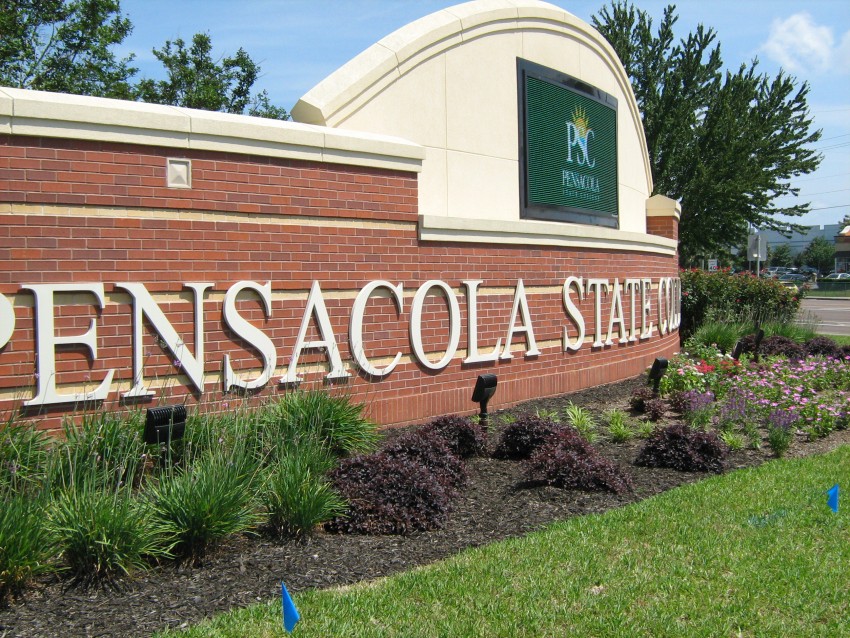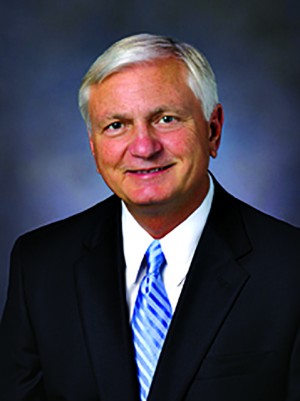How Pensacola State is recapturing would-be grads
- November 22, 2015
- / Shannon Nickinson
- / education

Pensacola State College.
Aiming high is an important part of progress.
We want all of our young people to reach for the stars when it comes to their prospects for getting the education they need to land a job that will pay them a livable wage.
That is especially true given the fact that data from the Studer Community Institute’s Pensacola Metro Dashboard shows that our area lags the state average in college degree attainment and per capita income.
The dashboard is a set of metrics, created in collaboration with the University of West Florida, that highlight the economic, education and social well-being of the community.
But sometimes it’s better to keep your feet planted firmly on the ground.
Ready, Set, Work is Gov. Rick Scott’s effort to see state colleges boost their graduation rates to 100 percent.
The state average is 43 percent — which makes “Ready, Set, Work” an awesome news release, but leaves a little to be desired in the reality area.
PSC’s graduation rate was 35 percent based on its showing on performance metrics rolled out this year.
PSC was hit hard when the State Board of Education expanded performance-based funding to state colleges. PSC lost $613,000 of their $34 million in base funding. They have the chance to get half of that money back if they can show that steps they’ve taken to recapture students are working.
Come January, Pensacola State College President Ed Meadows says, his college will make its case for the progress it has made so far.
“We’ve met all of our goals except one,” Meadows says.
The college’s efforts, implemented this summer, are a combination of winning hearts, minds and pocketbooks.
Meadows says those efforts include:
— An improved and more comprehensive orientation process for incoming students, including volunteer mentors who can be assigned to struggling students.
— A virtual tutoring system that allows students to ask for help when it suits their schedule.
— A dashboard that tracks red flags for a student’s progress — failing a course, not returning after one semester, changing majors — so that someone can reach out to that student to help.
“If those road-blocks are, for example, financial, and they are in good standing we can help them through our foundation,” Meadows says. “We’ve had a lot more hands-on contact with that cohort of students (who are at-risk of not graduating). We know we have captured students who had dropped out.”
PSC’s full improvement plan is linked here.
Clearly data show that jobs with higher wages require more training than a high school diploma. College graduates tend to earn more than those without degrees.
Data from the Studer Community Institute’s metro report indicates that only 10.4 percent of the people in Escambia County — and 9.4 percent of the people in Santa Rosa County — have an associate’s degree.
In both counties only about 15 percent of the population holds a bachelor’s degree.
So when it comes to building the best-educated workforce we can, the Pensacola metro area is in some important ways missing the mark.
Meadows seems to be taking the 100 percent goal in stride.
“I think the whole intent of the state college system is to do better than what it is doing regardless of already being better than the national average,” he says. “It begs the question of what’s good enough. Harvard only graduates 96 percent of their students.”
Meadows says he will focus on steady improvement. Gov. Scott set no timeline for his ambitious graduation goal.
“National statistics are (measuring completion rate by how many students earn their degrees in) six years now because the population in community colleges are part-time,” Meadows notes. “We only measuring full-time students and a large percentage of our full-time students become part-time” as they work toward their degree.
In five years, he’ll consider it success if PSC’s graduation rate tops the state average.
A growth rate of 2-3 percent each year is progress enough for him. And whatever the numbers are, Meadows says there is no choice but improving the graduation rate.
“Our completion rates in workforce areas are very closely tied to the economic development initiative of our community and meeting workforce needs of our community,” he said.
In other words, failure is not an option.


 CivicCon launches with a look at good growth in cities
CivicCon launches with a look at good growth in cities
 Building stronger brains one baby, one parent at a time
Building stronger brains one baby, one parent at a time
 SCI debuts commercial on Early Learning City
SCI debuts commercial on Early Learning City
 Entrecon: World class speakers and an opportunity to sharpen skills
Entrecon: World class speakers and an opportunity to sharpen skills
 PYP Quality of Life survey 2017
PYP Quality of Life survey 2017
 EntreCon Pensacola 2016: A look back
EntreCon Pensacola 2016: A look back
 Leadership tip: getting better employee takeaways
Leadership tip: getting better employee takeaways
 Leadership tip: be interested instead of interesting
Leadership tip: be interested instead of interesting
 Leadership tip: delivering difficult messages
Leadership tip: delivering difficult messages
 Brain Bags boost Arc, Early Childhood Court programs
Brain Bags boost Arc, Early Childhood Court programs